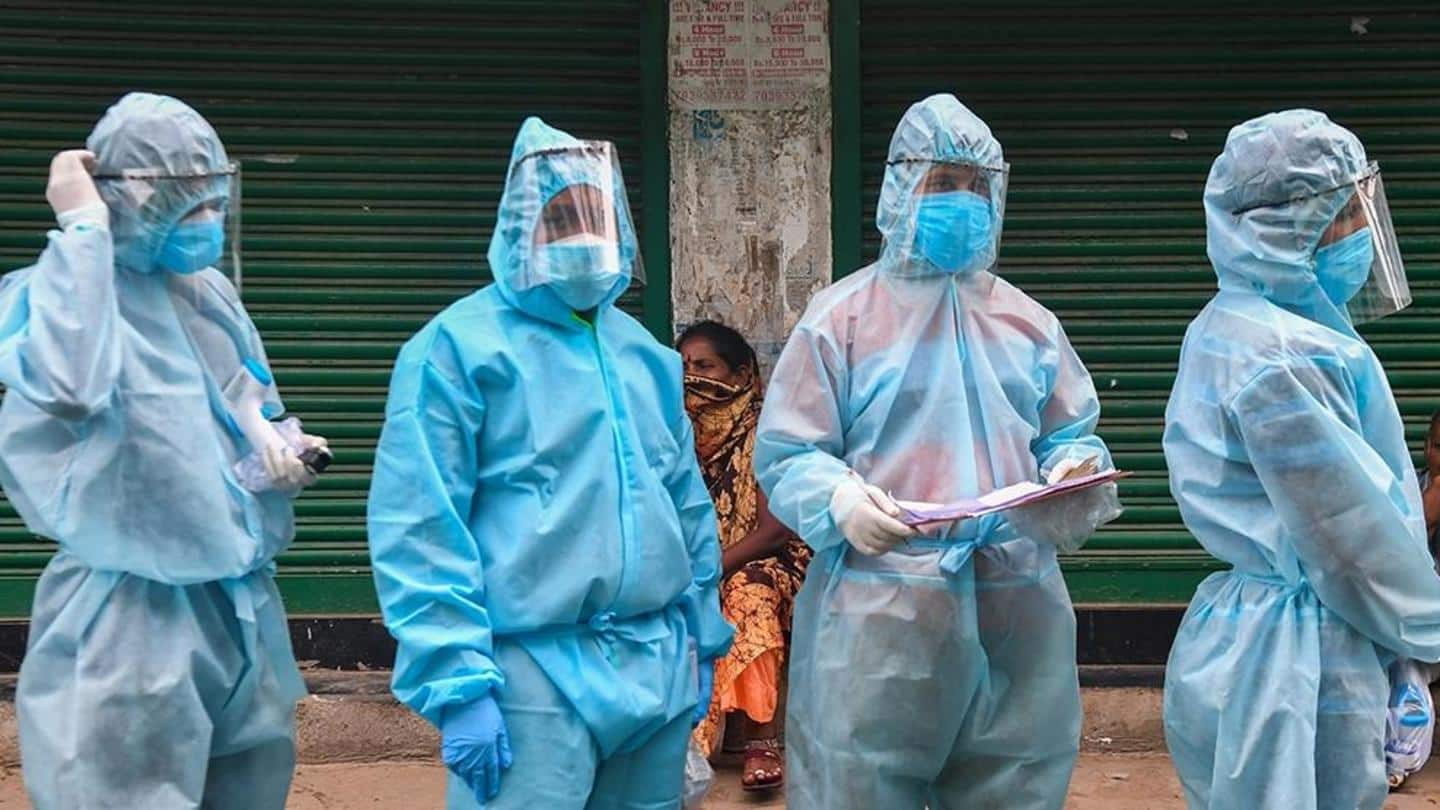
Coronavirus: Aerosols can travel up to 10 meters, says government
What's the story
Even as India continues to fight a tough battle against a devastating second wave of the coronavirus, the central government has issued fresh guidelines on how to curb the spread of the virus.
In the document, titled "Stop the Transmission, Crush the Pandemic," the government focuses on measures such as double masking, physical distancing, and proper ventilation arrangements.
Here are more details on this.
Details
Saliva, nasal discharge primary mode of virus transmission
Saliva and nasal discharge from an infected individual in the form of droplets and aerosols is the primary mode of coronavirus transmission, the Indian government's Principal Scientific Adviser K VijayRaghavan's office said in the guidelines today.
Though droplets fall within two meters of an infected person, smaller aerosol particles can travel in the air up to 10 meters, according to the document.
Masks
Double mask or use an N95 mask
You should wear a double layer mask or an N95 mask for maximum protection, the guidelines say.
For double masking, prefer wearing a surgical mask and a tight-fitting cloth mask over it.
"Ideally, surgical mask should be used only once, but when pairing, you can use it up to five times by leaving it in a dry place for seven days after one use."
Information
Frequently clean high-contact points to avoid virus spread
Droplets emitted by an infected person can land on various surfaces and survive there for a long time, the advisory warned. It suggested frequent cleaning of high-contact points such as door handles, switches, taps, and chairs, etc., using disinfectants like phenyl and bleach.
Ventilation
Document highlights importance of proper ventilation
The document also highlights the role of well-ventilated spaces in reducing the risk of coronavirus spread.
"Just as smells can be diluted from the air through opening windows and doors and using exhaust systems, ventilating spaces with improved directional air flow decreases the accumulated viral land in the air, reducing the risk of transmission," it said.
Measures
Placement of fans crucial in reducing risk
The placement of fans is crucial - they should not be placed where they can cause contaminated air to flow directly toward a person present in the room, according to the advisory.
If the windows and doors of a room are closed, the exhaust fans must be turned on "to create the ideal airflow for maximum protection from indoor infection."
Measures
If ACs are on, doors and windows should be opened
In indoor settings where air conditioners are turned on, doors/windows should be kept wide open so that clean air can enter from the outside and dilute the virus particles. Adding an exhaust fan is also recommended.
"In offices, auditoriums, shopping malls etc. use of gable fan systems and roof ventilators are recommended. Frequent cleaning and replacement of filters is highly recommended," the advisory added.
Situation
India's coronavirus crisis
India has been gripped by a ferocious second wave of the COVID-19 pandemic, reporting lakhs of new infections every day over the past few weeks.
In the past 24 hours, the country logged 2,76,070 new coronavirus cases.
With over 3,800 more fatalities, the death toll in India crossed 75,000 for this month and 2.87 lakh overall.